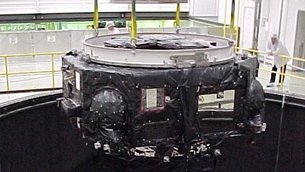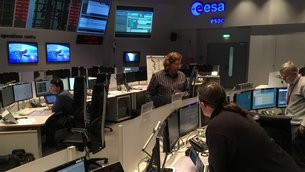.
TEACHING AN OLD SATELLITE NEW TRICKS
XMM-Newton is one of Europe’s longest-flying and most productive orbiting observatories, investigating the hot X-ray Universe. Thanks to teamwork and technical innovation, it’s on track to keep flying for a long time yet.
Launched 17 years ago, ESA’s orbiting X-ray telescope has helped scientists around the world to understand some of our Universe’s most mysterious events, from what happens in and around black holes to how galaxies formed.
At 3800 kg, the 10 m-long XMM-Newton is the biggest science satellite ever built in Europe and its telescope mirrors are the most sensitive ever developed.
Expected to operate for as long as a decade, the hardy spacecraft has happily surprised everyone by lasting almost two decades – and it shows no signs of giving up.
The success of XMM-Newton has been possible not only because of the robust spacecraft, but also the close cooperation between ESA’s astronomy centre near Madrid, Spain, and the mission controllers at ESA’s operations centre in Darmstadt, Germany.
“The total number of 4775 scientific publications to date, with 358 from this year alone, is an impressive record of the mission’s scientific success, covering many, many areas of astrophysics,” notes project scientist Norbert Schartel.
But keeping it fit and healthy into its third decade means the team must continue to develop and test new control techniques. A complex change to the orbit control system has almost halved fuel consumption, for example.
(Not) running on empty
For starters, keeping XMM in orbit will require occasional thruster firings, about once per day, and that means burning fuel.
“We’ve got plenty of fuel and over the years we’ve figured out how to use less and less to maintain our science orbit,” says Marcus Kirsch, spacecraft operations manager.
“The fuel is distributed between four separate tanks, but the main tank will run dry first. The design means we could not use the remaining fuel in the other tanks, so we're moving it all into tank 1. This will enable us to continue operations into the coming decade.”
Back in the control room
As part of this process, the flight control team returned to ESA’s large, general-purpose Main Control Room at mission control in November – the first time since launch in 1999 – for five days of intensive simulations. The team usually works from a smaller, dedicated room shared with the Integral and Gaia mission teams.
The simulations checked the procedures that will be used for moving the fuel and for reconfiguring XMM for working beyond 2017.
Quelle: ESA



